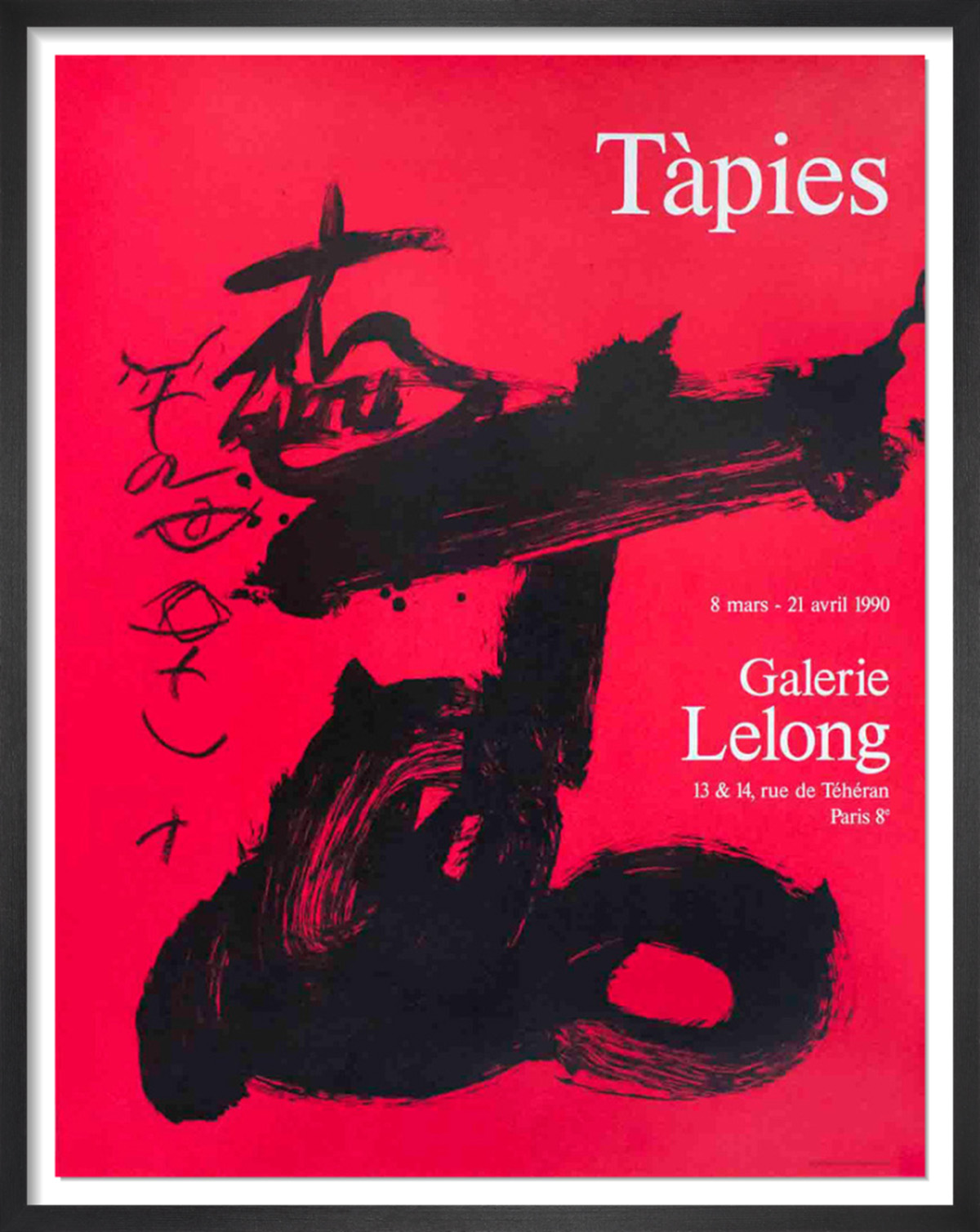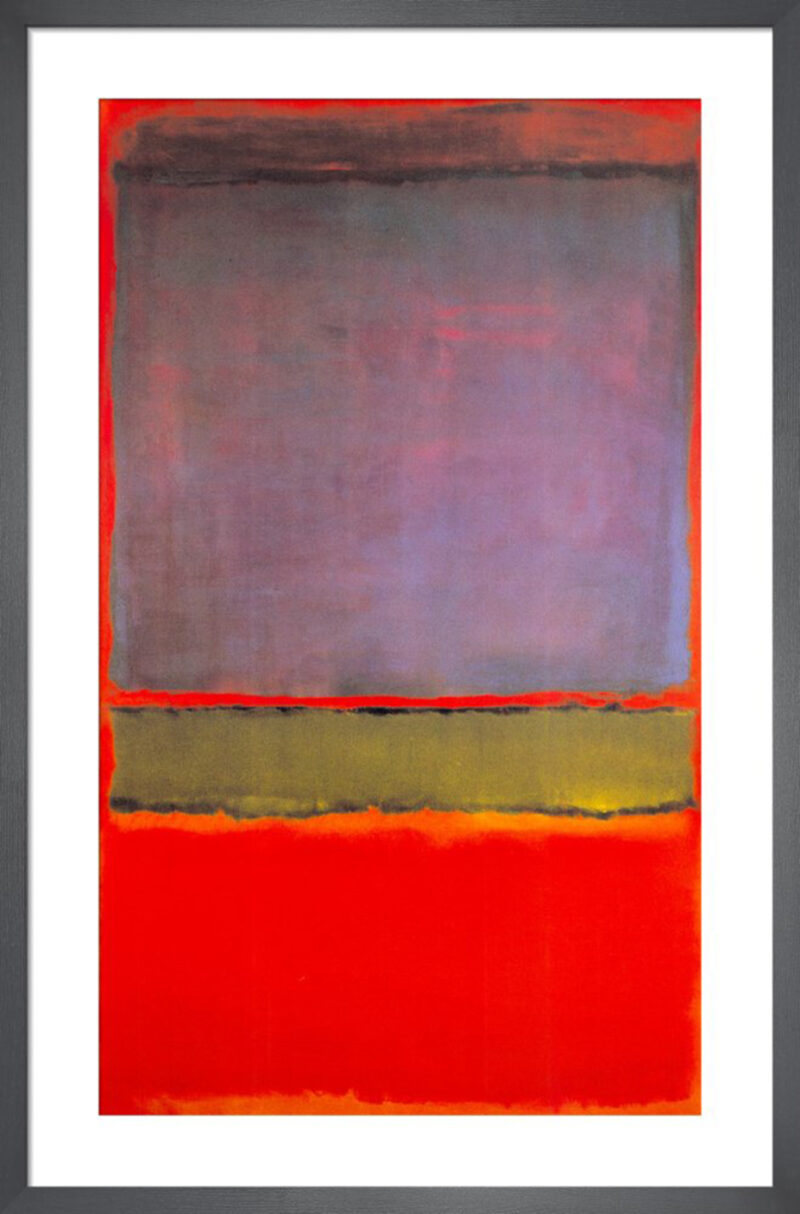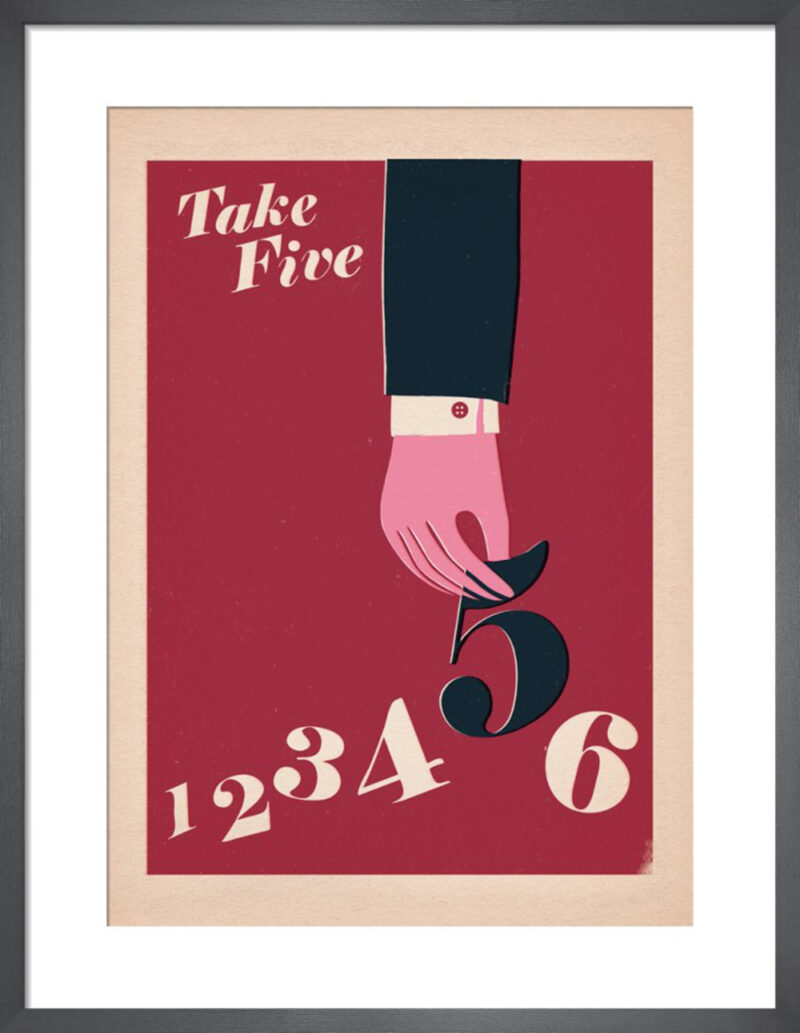
No.6 (Violet, Green, & Red)
April 27, 2022
Genesis III, 1966
November 23, 2022Black and Red, Galerie Lelong, 1990
Antoni Tàpies
£390
Framed rare poster
Exhibition poster for Tàpies’ exhibition at Galerie Lelong in Paris, 1990.
Black stained ash recessed box frame floated on conservation mount board.
Some prints contain writing in the border area.
All images contained on this website are copyrighted property of their respective owners. All rights reserved.
The Artist
Antoni Tàpies i Puig, 1st Marquess of Tàpies
13 December 1923 – 6 February 2012
Antoni Tàpies was a Catalan Spanish painter, sculptor and art theorist, who became one of the most famous European artists of his generation.
Tàpies was perhaps the best-known Spanish (Catalan) artist to emerge in the period since the Second World War. He first came into contact with contemporary art as a teenager through the magazine D’Ací i D’Allà, published in Barcelona, and during the Spanish Civil War (1936–39), while he was still at school, he taught himself to draw and paint. On a French government scholarship in the early 1950s he lived in Paris, to which he often returned. Both in Europe and beyond, the highly influential French critic and curator Michel Tapié enthusiastically promoted the work of Antoni Tàpies.
In 1948, Tàpies helped co-found the first Post-War Movement in Spain known as Dau al Set which was connected to the Surrealist and Dadaist Movements. Tàpies started as a surrealist painter, his early works were influenced by Paul Klee and Joan Miró; but soon become an informal artist, working in a style known as pintura matèrica, in which non artistic materials are incorporated into the paintings. In 1953 he began working in mixed media; this is considered his most original contribution to art. One of the first to create serious art in this way, he added clay and marble dust to his paint and used waste paper, string, and rags (Grey and Green Painting, Tate Gallery, London, 1957). Canvas Burned to Matter from c. 1960, in the collection of the Honolulu Museum of Art, is an example of the artist's mixed media assemblages that combine the principles of Dada and Surrealism.
Tàpies' international reputation was well established by the end of the 1950s. From the late 1950s to early 1960s, Tàpies worked with Enrique Tábara, Antonio Saura, Manolo Millares and many other Spanish Informalist artists. In 1966 he was arrested at a clandestine assembly at the University of Barcelona; his work of the early 1970s is marked by symbols of Catalan identity (which was anathema to Franco). In 1974 he made a series of lithographs called Assassins and displayed them in the Galerie Maeght in Paris, in honour of regime critic Salvador Puig Antich's memory. From about 1970 (influenced by Pop art) he began incorporating more substantial objects into his paintings, such as parts of furniture. Tàpies's ideas have had worldwide influence on art, especially in the realms of painting, sculpture, etchings and lithography. Examples of his work are found in numerous major international collections. His work is associated with both Tachisme and Abstract Expressionism.
The paintings produced by Tàpies, later in the 1970s and in the 1980s, reveal his application of this aesthetic of meditative emptiness, for example in spray-painted canvases with linear elements suggestive of Oriental calligraphy, in mixed-media paintings that extended the vocabulary of Art informel, and in his oblique allusions to imagery within a fundamentally abstract idiom, as in Imprint of a Basket on Cloth (1980). Among the artists' work linked in style to that of Tàpies is that of the American painter Julian Schnabel as both have been connected to the art term "Matter".
The Print
So it’s just a poster. So what..!?
But what a poster!
Possibly the best black on red you’re likely to encounter for a while. And it’s unique and interesting because he made it.
This vintage exhibition poster was created by Antoni Tàpies for a showing of his latest works at the Galerie Lelong in Paris in 1990. The poster you see on the wall, in its black, crafted, recessed box frame, and behind UV deflecting, 3mm cast acrylic glazing, is one of the original posters. It’s 32 years old.
A number of these original offset lithographic posters were archived by the publisher Lelong of Paris. Since his death, in February 2012, there’s been a resurgence of interest in one of the most complex and brilliant artists and thinkers of the last century.
The poster is regarded by Mourlot of Paris as one of his most powerfully colourful pieces, and we would agree, matched only, perhaps, by one of his much later works, "Grattage Rojo" (Red grattage), of 2008. The poster is also included in the Galfetti catalogue of Tapies' works.
Item data
Medium: Offset lithograph
Date: 1990
Frame: Black stained ash frame in a recessed box
Framed dimensions: 85 x 70 cm
Image area dimensions: 77 × 62 cm
| Dimensions | 85 × 70 cm |
|---|
You might also enjoy these...
-
No.6 (Violet, Green, & Red)
No.6 (Violet, Green, & Red)
Mark Rothko
£165Framed print
Grey ash frame with window mount, 83 x 54 cm
Mark Rothko was an American abstract artist of Latvian Jewish descent, best known for his abstract expressionist paintings. Rothko produced ‘No.6 (Violet Green & Red) in 1951. This piece was part of his colour field paintings, a series of canvases characterised by their large fields of flat solid colour which created areas of unbroken surface and a flat plane.
Actual product may differ slightly to image above. Some prints contain writing in the border area.All images contained on this website are copyrighted property of their respective owners. All rights reserved.
-
Veni Pebeta
Veni Pebeta
Art Inspired by Music
£140Framed print – SOLD
‘Veni Pebeta’ from Art Inspired by Music — a collection of exquisite images that were originally created as the front covers for sheet music.
Collection
In collaboration with Art Inspired By Music
All images contained on this website are copyrighted property of their respective owners. All rights reserved. -
Take Five
Take Five
Anthony Peters
£140Framed print
Anthony Peters is a graphic designer and illustrator who runs his own design studio in Newhaven, East Sussex. Peters is influenced by elements of popular culture, from Ladybird books to vintage record covers, as well as the simplicity of family life. He creates vibrant and nostalgic graphic imagery, such as this print ‘Take Five’.






